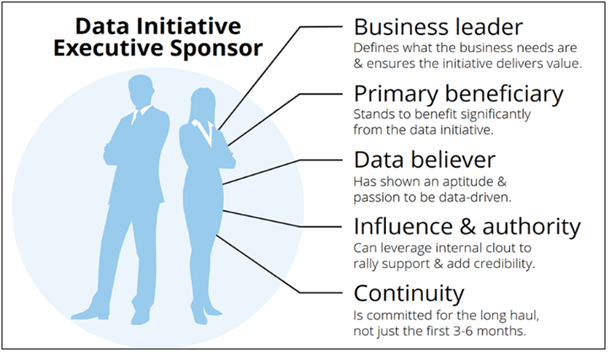The objectives of the organization must be aligned such that all functions, including procurement and supply chain can work towards the same goals of corporate sustainability and not struggle with each other. This may be done at the controlling levels to drive growth, capital and risk management and provides as a universal point to get launched. It is no longer decent to have a generic CSR (corporate social responsibility) policy in the company such as having power saving elements in the plant, using low transmission delivery trucks or having your staff come forward at the local community centre.
Table of Contents
The Transparency Factor
Being clear about the all procurement process with everyone carry out is a key factor in sustainability. All members should be mindful of their own different roles within the proceeding. They should also be kept up to date on the general goals of the inclusive project, so they can see how everybody else contributes to the bigger picture. Transparency also demonstrates honesty and made up trust among your partner and beneficiaries.
When everybody can obviously see where they and everybody else suits into the process, it owns them to see that there are integrity and impartiality throughout. And if there are any fields where the process is suspected not to be fair or equal, this issue can be set up and treated with.

The Factor for Executive Sponsorship
The executive sponsorship is for organizations to build sustainability into their planning and operational objectives. In order to utilize the freedoms that sustainability could offer, companies should take a critical view of sustainability and organize them into its planning and operational objectives, and then descend them throughout the organization. By building sustainability drivers onto business objectives, the business is able to consistently seek these opportunities and setting up the business to support it. Away from the basic qualities that most rewarding managements possess, such as leadership abilities, strategic thinking, relationship-building skills, communication skills, sincerity and so on, there are certain principles that you should look for in a managerial sponsor when it comes to data-related projects or plans.
The Factor for Nature of the Sector
The nature of the sector is a great factor to look at in the implementation of sustainable procurement is the nature of the sector where it is being implemented, for details, it is no great surprise that the improvement of sustainable procurement is hugest within the private and in some countries the local and national governmental sector. It is here where developments to procurement policy are approximately easily integrated and taken up. Within the intergovernmental sector such as the UN system of organizations, carrying out of sustainable procurement principles and processes becomes more complicated, basically due to the remaining rules and regulations governing competitive demand particularly on an international basis. To carry out changes to a procurement system that can be seen as favouring suppliers from certain countries or regions simply because they are more advanced in the environmental and social performance turns out to be a very tough proposition. It is at this point that the combination of sustainable procurement has thus far been strained within the UN procurement system. Work is, however, going on to overcome this dilemma.
The Environment Factor
In order to reduce carbon footprint and strengthen sustainability, supply chains are now prioritizing reducing environment impacts by using abilities more accurately and using sustainable energy, like solar and wind energy. Another planning used is the strategic placing of a warehouse or distribution centre. This can cut down carbon footprint and reduce radiation the positive effects can be instantly be translated to cost savings and a faster delivery. By reacting to calls for renewable energy, management are able to tap into tax savings and incentives.

The Accountability Factor
It’s one big puzzle and everyone is an important part. The more stakeholders are prepared mindful of the whole project and its targets and outcomes, the greater. People work greater together when they recognize what they are granting towards and what is awaited of them. By appointing stakeholders in the proceeding, they are allowed and able to hold contractors liable when key targets aren’t concluded. If there are lags or interruption, the stakeholders now recognize how this influences the full process and can handle judgment in the thing of an issue happening – making all process sustainable and more sufficient.
The full content is only visible to SIPMM members
Already a member? Please Login to continue reading.
References
Kissflow. (2020) “Procurement Management Process’’ Retrieved from https://kissflow.com/procurement-process/ accessed 17/6/2020.
Chin Ting Boon, DPSM. (2019). “Five Crucial Factors for Implementing P2P System”. Retrieved from SIPMM: https://publication.sipmm.edu.sg/five-crucial-factors-implementing-p2p-system/ accessed 18/6/2020.
Winky Lim, ADPMM. (2017). “Ensuring Sustainable Practices in Procurement for Effective Supply Management”. Retrieved from SIPMM: https://publication.sipmm.edu.sg/ensuring-sustainable-practices-in-procurement-for-effective-supply-management/ accessed 18/6/2020.
Lynn Lai, GDSCM. (2017).“The 5 Critical Factors to be Considered for building a Sustainable Supply Chain”. Retrieved from SIPMM: https://publication.sipmm.edu.sg/the-5-critical-factors-to-be-considered-for-building-a-sustainable-supply-chain/ accessed 18/6/2020.
Oxford College of Procurement and Supply, (2020). “3 Factors That Make a Sustainable Procurement System’’ Retrieved from https://www.oxfordcollegeofprocurementandsupply.com/3-factors-that-make-a-sustainable-procurement-system/ accessed 18/6/2020.
Interagency Procurement Working Group (IAPWG) (2012) “Sustainable Procurement’’ Retrieved from https://www.ungm.org/ accessed 18/6/2020.

